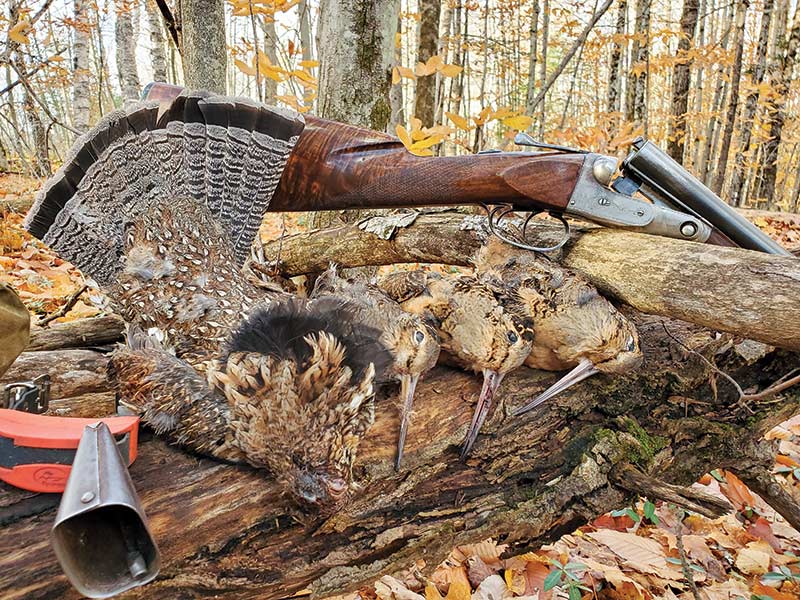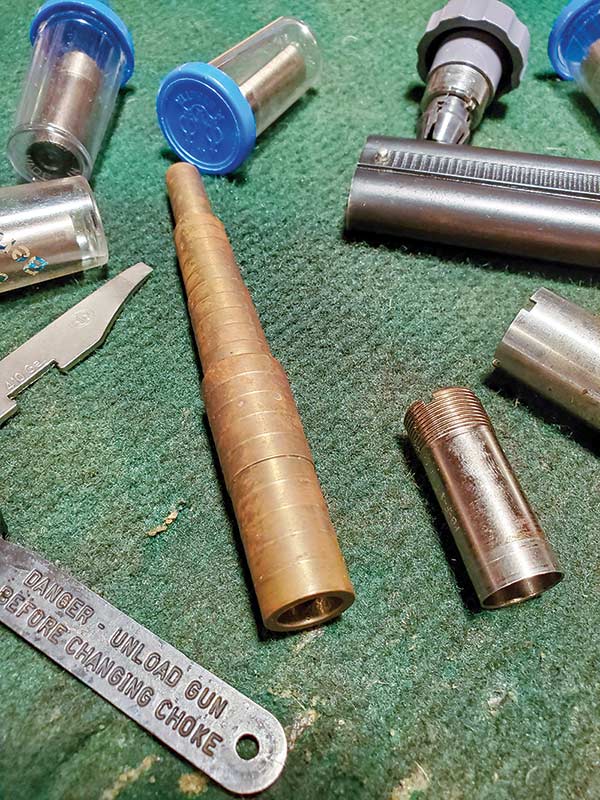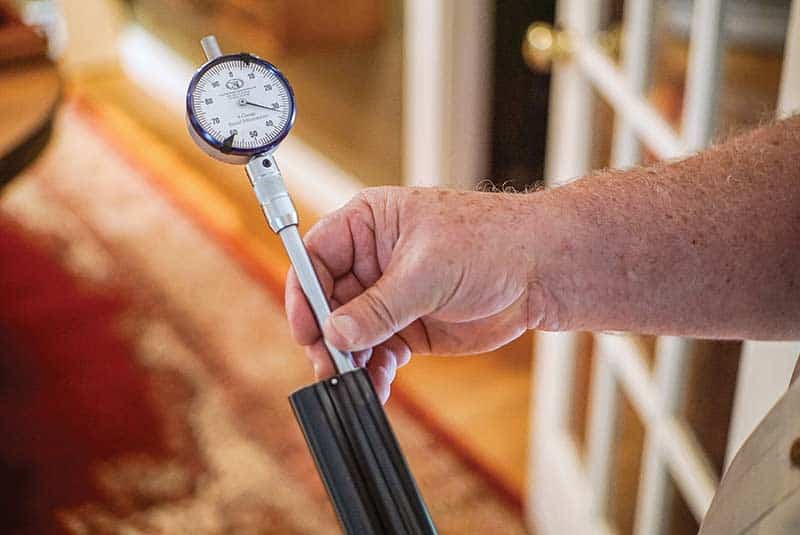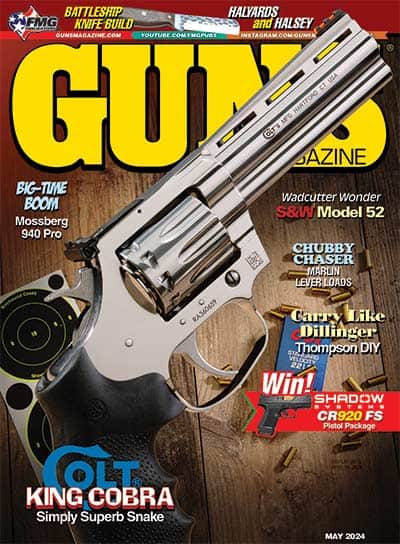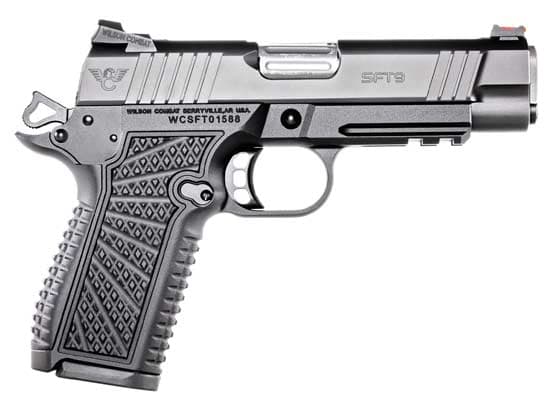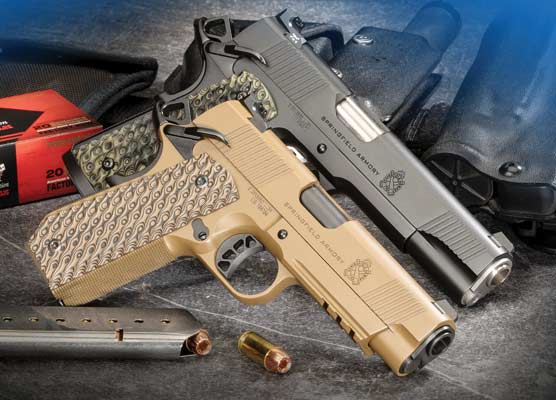All Choked Up
Shotgun Chokes Demystified
I only had a second to admire Cider’s point near the alders. I figured he nailed a woodcock and loaded for that small bird but the explosive whirring of wings came from a Ruffed Grouse. I swung when the bird crested the treetops and my cylinder choke quickly spread the ¾-oz. load of #9s. It didn’t take but a half-dozen of the 439 pellets to bring Old Grousey to earth, and when roasted, he tasted delicious that night. The acorn squash and wild rice was pretty good, too.
History
In the 1800s, gunsmiths looked to improve shooting success by tightening and loosening a choke’s constriction. Rhode Island’s Jeremiah Smith is considered to have pioneered the concept of choke in 1827. Decades later, Illinois’ Fred Kimble, who is also an inductee of the Trapshooting Hall of Fame, bored different diameters into heavy, unused musket barrels to achieve better patterns at close, medium and long distances.
“After I had finished boring the 6-bore, I found I had a gun effective up to 80 yards. The gun would shoot through an inch board at 40 yards. The velocity up to 40 yards was very great; at 60 yards it slowed down to one-half and at 80 yards it slowed down to another half,” Kimble wrote.
Kimble’s friend Sylvester Roper also worked on different designs and applied for a patent for chokes in 1866. Across the pond, Continental gunsmiths focused their attention on choke designs, too. England’s W.R. Pape applied for a patent around the same time and in 1874, William Wellington Greener of W.W. Greener’s made significant strides to help shooters improve hits and reduce misses.
Choke Types
A cylinder choke has a muzzle diameter the same as the barrel. A cylinder choke offers no constriction and allows pellets to spread as soon as they leave the muzzle.
Cone or American tapers were used in a variety of constrictions. These tapers are used today, appearing in improved cylinder, modified and improved modified chokes. The effective shooting ranges vary and are between 20–30 yards, 30–40 yards or 45–55 yards, respectively.
To illustrate the different pattern spread, an improved cylinder throws 40% of the shells’ pellets into a 30″ circle at 40 yards. A modified choke places 60% of the shell’s pellets in a 30″ circle at 40 yards while an improved modified lands 65% of pellets in that same circle at the identical distance.
Bell chokes are the opposite of cone chokes. Their taper is uniform until it flares and widens at the muzzle. The idea was to tighten and then loosen constriction so there would be an ideal combination of velocity (speed) and spread.
Skeet chokes tighten and then open quickly. They’re preferred for close shots with 50% of the shell’s pellets landing in a 30″ circle at 25 yards.
The full choke tightens steeply to throw effective patterns at the 55–65 yard range; 70% of the shell pellets should be in a 30″ circle at 40 yards.
Cone chokes do not have a gradual taper and instead tighten aggressively close to the muzzle. They are effective at longer distances. Jug chokes tighten, loosen and tighten near the muzzle. The shot is loosened and then tightened as it leaves the muzzle. They’re frequently used in competition shotguns for better patterning as well as recoil reduction.
Slug choke specifically handles slugs, which also can be shot through any choke, with the exception of an extra full choke.
A New Solution
To shoot targets or game at different distances required shooters to carry several shotguns with different fixed chokes. Winchester arrived at a solution to make life much easier — and more affordable — for shotgunners when they debuted their Versalite interchangeable chokes in 1959 in their Model 59. The semi-automatic came with improved cylinder, modified and full chokes, but they weren’t well received by everyone. One gun writer wrote “the interchangeable chokes were a novelty that would not last.” I think I might have said something similar in the 1990s about the Internet being a fad, too. How wrong we were …
Winchester continued to perfect interchangeable chokes and ultimately arrived at the Winchoke system of three interchangeable chokes. The flexibility carried over into their marketing, and the tagline “3 Guns in One” was legendary. Winchester included Winchokes in all actions of their shotguns starting with the Models 1200 pump, the Model 1400 semi-automatic, the Model 101 over/under and the Model 23 side-by-side. They are the standard on which current interchangeable tubes are based.
Using the correct shotgun choke is key to shooting success. Whether you prefer a fixed choke or an interchangeable set of tubes is up to you, but they are an important way to turn our frowns upside down.
